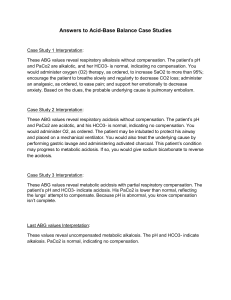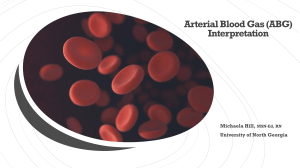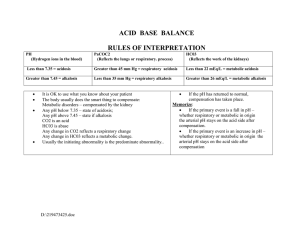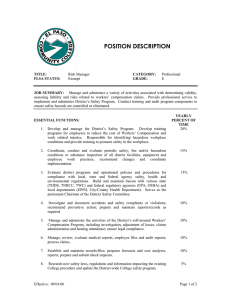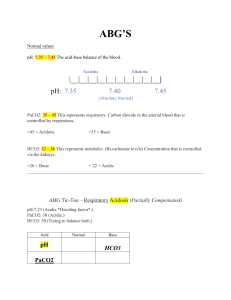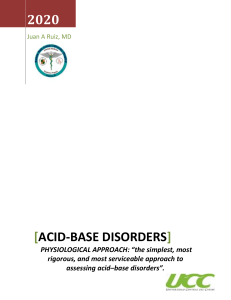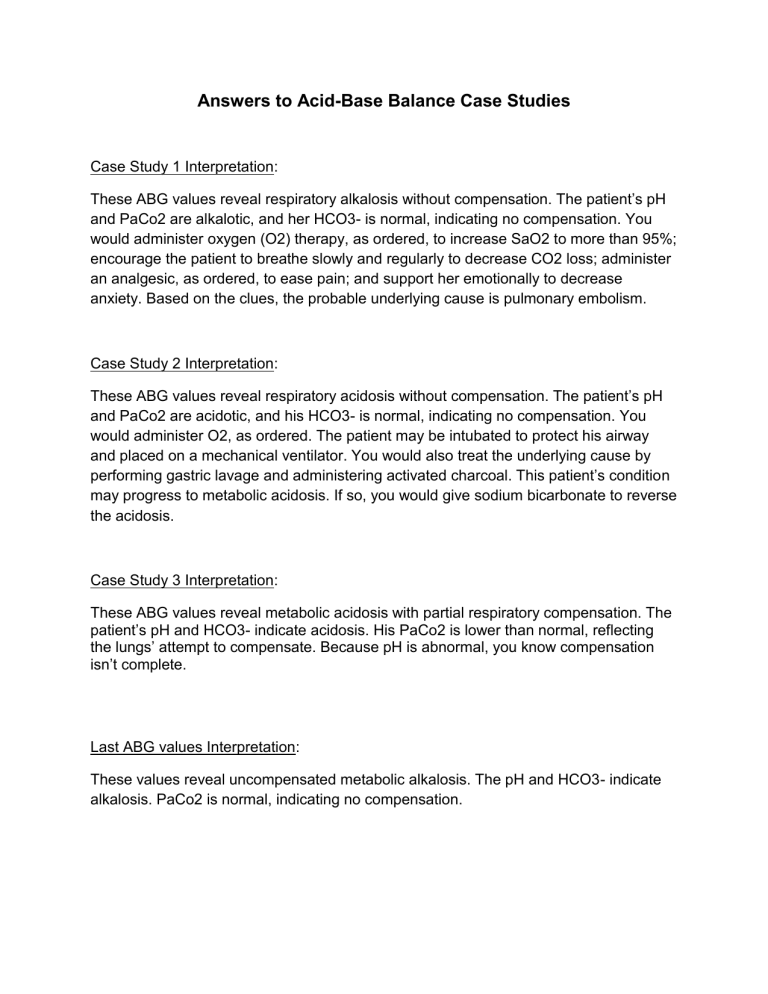
Answers to Acid-Base Balance Case Studies Case Study 1 Interpretation: These ABG values reveal respiratory alkalosis without compensation. The patient’s pH and PaCo2 are alkalotic, and her HCO3- is normal, indicating no compensation. You would administer oxygen (O2) therapy, as ordered, to increase SaO2 to more than 95%; encourage the patient to breathe slowly and regularly to decrease CO2 loss; administer an analgesic, as ordered, to ease pain; and support her emotionally to decrease anxiety. Based on the clues, the probable underlying cause is pulmonary embolism. Case Study 2 Interpretation: These ABG values reveal respiratory acidosis without compensation. The patient’s pH and PaCo2 are acidotic, and his HCO3- is normal, indicating no compensation. You would administer O2, as ordered. The patient may be intubated to protect his airway and placed on a mechanical ventilator. You would also treat the underlying cause by performing gastric lavage and administering activated charcoal. This patient’s condition may progress to metabolic acidosis. If so, you would give sodium bicarbonate to reverse the acidosis. Case Study 3 Interpretation: These ABG values reveal metabolic acidosis with partial respiratory compensation. The patient’s pH and HCO3- indicate acidosis. His PaCo2 is lower than normal, reflecting the lungs’ attempt to compensate. Because pH is abnormal, you know compensation isn’t complete. Last ABG values Interpretation: These values reveal uncompensated metabolic alkalosis. The pH and HCO3- indicate alkalosis. PaCo2 is normal, indicating no compensation.
